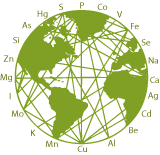Cerium
Cerium has no biological role in humans and is not very toxic. It is the most common of the lanthanides and Cerium compounds have a variety of uses. Cerium(IV) oxide is used to polish glass and is an important part of catalytic converters. Cerium metal is used in ferrocerium lighters for its pyrophoric properties. It is used in CRT TV screens and fluorescent lamps.
Cerium does not accumulate in the food chain to any appreciable extent. Because it often occurs together with calcium in phosphate minerals, cerium can accumulate in bones in small amounts that are not considered dangerous.
Like all rare-earth metals, cerium is of low to moderate toxicity. A strong reducing agent, it ignites spontaneously in air at 65 to 80 °C. Fumes from cerium fires are toxic. Water should not be used to stop cerium fires, as cerium reacts with water to produce hydrogen gas. Workers exposed to cerium have experienced itching, sensitivity to heat, and skin lesions. Cerium is not toxic when eaten, but animals injected with large doses of cerium have died due to cardiovascular collapse. Cerium is more dangerous to aquatic organisms, on account of being damaging to cell membranes, but this is not an important risk because it is not very soluble in water.
- Emsley, John (2011). Nature's Building Blocks: An A-Z Guide to the Elements. Oxford University Press. pp. 120–125.
- Cerium - Wikipedia
